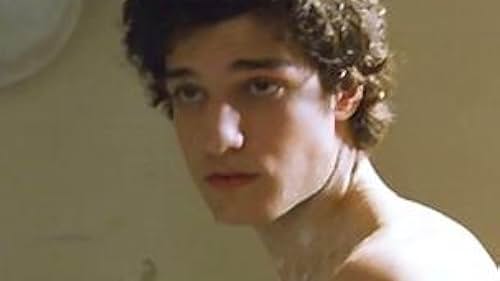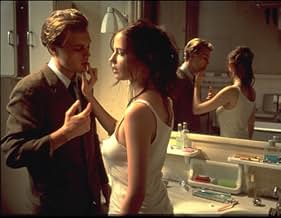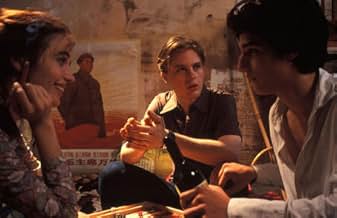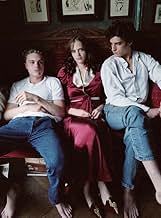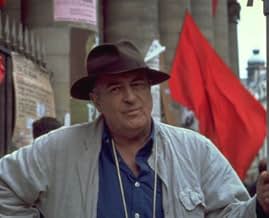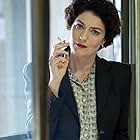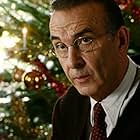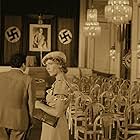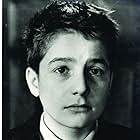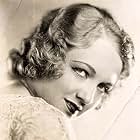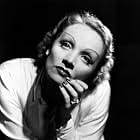Un giovane americano studiando a Parigi nel 1968 fa amicizia con un fratello e una sorella francesi. Ambientato durante le rivolte studentesche a Parigi del '68.Un giovane americano studiando a Parigi nel 1968 fa amicizia con un fratello e una sorella francesi. Ambientato durante le rivolte studentesche a Parigi del '68.Un giovane americano studiando a Parigi nel 1968 fa amicizia con un fratello e una sorella francesi. Ambientato durante le rivolte studentesche a Parigi del '68.
- Premi
- 2 vittorie e 11 candidature
Jean-Pierre Léaud
- Self
- (as Jean-Pierre Leaud)
Gilbert Adair
- Man in the Louvre
- (non citato nei titoli originali)
Fred Astaire
- Jerry Travers
- (filmato d'archivio)
- (non citato nei titoli originali)
Jean-Paul Belmondo
- Michel Poiccard a.k.a. Laszlo Kovacs
- (filmato d'archivio)
- (non citato nei titoli originali)
Charles Chaplin
- A Tramp
- (filmato d'archivio)
- (non citato nei titoli originali)
Virginia Cherrill
- A Blind Girl
- (filmato d'archivio)
- (non citato nei titoli originali)
Marlene Dietrich
- Helen Faraday, aka Helen Jones
- (filmato d'archivio)
- (non citato nei titoli originali)
Trama
Lo sapevi?
- QuizTo make the actors feel comfortable and natural in the film's nude scenes, the director Bernardo Bertolucci would encourage them to be totally nude long before the actual shot so they could get used to be naked around each other. Source: Director's commentary on DVD
- BlooperOn the walk along the canal, Isabelle states that she "...entered this world on the Champs-Elysees, 1959." She is obviously much older than 9, but she is not referring to her actual birth. She is reciting a speech from Fino all'ultimo respiro (1960), whose clips are shown.
- Curiosità sui creditiThe word "events" is misspelled in the sentence stating "The wevents, characters and firms depicted in this photoplay are fictitious."
- Versioni alternativeUS R-rated version runs ca. 3 minutes shorter than the uncut NC-17-rated version. The following was cut from the NC-17 version for the R rated version:
- 45:40/45:40-45:45 Extended shot of Theo kneeing in front of the Marlene Dietrich masturbating while being watched by Isabelle and Matthew. The following shot of Isabelle lacks a second.
- 45:55/46:00-46:09 The scene with Matthew ends earlier in the R-Rated Version. In the Unrated Version, he's being shown from another angle while he's still masturbating. He slightly hits the wall with the head and touches the picture. The beginning of the following shot of Isabelle moving her head is missing as well.
- 46:02/46:16-46:29 A moment later, the R-Rated Version ends when Isabelle pets Theo's butt and back with a feather duster. Theo's waving hand can be recognized better here.
- 46:07/46:34-46:37 The end of the shot of Isabelle is missing and so is the beginning of the following shot of Theo masturbating. The R-Rated Version is back in the game when Theo's coming.
- 53:42-53:45/54:12-54:20 Alternate footage of Isabelle dropping Matthew's shorts in the R-Rated Version. In the Uncut Version, she drops his shorts and his penis is visible. Furthermore Matthew had a picture of her in his shorts. (7.97 sec) The R-Rated Version contains a close-up of Matthew instead. This exact shot is exclusively in the R-Rated Version. (3.21 sec)
- 55:03/55:38-55:55 The camera pans over their naked bodies. Isabelle has her hands at Matthew's crotch and supports him to penetrate into her.
- 55:20/56:12-56:21 Extended shot of Isabelle's face while they're having sex. She moans. The beginning of the following shot a little lower is also missing.
- 57:05/58:07-58:50 The R-Rated Version stops and goes on with alternate footage of Isabelle when Theo enters the kitchen. The footage is slightly different to the footage a little later in the Uncut Version. Theo slowly goes to Isabelle and Matthew who are still lying lying on the ground. The camera tracks to them over the table. Theo knees down in front of his sister, pets her und touches her vagina. His fingers are bloody and he smiles at her. Then he gets up and Matthew touches her, too. His fingers are also bloody and that is where the R-Rated Version continues.
- 57:31/59:12-59:41 The R-Rated Version ends when Matthew smudges Isabelle's face with her own blood while they're kissing. They keep kissing, then they hug. The beginning of the following scene is also missing: they're having sex and the camera tracks slowly to the top.
- 58:42/1:00:52-1:00:59 The camera tracks slowly ober Isabelle's legs to the top, an explicit shot of her vagina included. The R-Rated Version only shows her breasts.
- 59:17-59:21/1:01:35-1:01:42 The R-Rated Version contains alternate footage of Isabelle when Matthew puts is head next to Isabelle's hip and her pubic hair is visible for a short period. The beginning of Matthew's comment is slightly shorter. (3.67 sec) The NC-17 Version sticks with Matthew. (7.63 sec)
- 59:27/1:01:49-1:01:59 Earlier beginning of the shot of Matthew. His face is pretty close to Isabelle's pubic area.
- 59:35/1:02:06-1:02:10 Same here. This time he kisses Isabelle's belly.
- 1:25:32/1:28:08-1:28:18 Extended shot of Isabelle in the mirror. Then a shot of Matthew's head between Isabelle's legs, under the tied round blanket. Then Isabelle in the mirror again. she really enjoys what Matthew is doing up there. The first frames of the following shot of Matthew are missing as well.
- ConnessioniFeatured in Cinema Sex Politics: Bertolucci Makes 'The Dreamers' (2003)
- Colonne sonoreThird Stone from the Sun
Written and Performed by Jimi Hendrix
Published by Experience Hendrix LLC
(p) 1967 Experience Hendrix LLC/MCA Records
Courtesy of Experience Hendrix LLC
Under license from Universal Music Enterprises & Universal Music Special Projects France
Recensione in evidenza
The decor for The Dreamers, Bertolucci's sensual and narcotic film is represented by effervescent moments that took place in Paris in 1968. In the same manner in which the house inhabited by the three main protagonists represents a character, so do the Parisian streets, with their trepidation and demonstrations. Contrary to other films directed by this director - who has promised much and delivered even more throughout his career - The Dreamers opens in a fast-paced and provocative manner. The director establishes the cinematic convention precisely, eloquently, and elegantly. It becomes clear that the film deals with furious and beautiful young people who live through the films they devour. In the first five minutes, the heroine of the picture (played impeccably by Eva Green, a theatre actress reminiscent of Isabella Rossellini) announces that she was born in 1959. Logically, it is impossible, seeing that the year is 1968 and she seems to be at least 19 years old. Therefore, she explains further: 1959, Champs-Elysee, where she yelled "New York Herald Tribune!" Suddenly the film cuts to a scene from the classic Breathless (A bout de soufflé) by Godard, where Belmondo's feminine partner sells American newspapers on Champs-Elysee. Consequently, Bertolucci's feminine character believes that she has not been alive until seeing the afore-mentioned film, considered by many the beginning of the New Wave. The idea of interposing images and references to classic films is augmented in The Dreamers. It becomes a means of communication between the characters and in fact it ignites the entire "action" of the film.
As in The Last Tango in Paris or Stealing Beauty, sex and sensuality also represent means of expression on which the director relies heavily. Yet The Dreamers rejects the desperation of The Last Tango through a seductive irreverence that indeed characterizes the so-called "enfants terrible" of 1968 Paris. It should be noted that The Dreamers contains various sexual and nude scenes, but that these are by no means as shocking as the sex scenes in The Last Tango were, when that film was released in the 1960s. Since then, video and Internet pornography have occurred and shocking audiences through nudity has become something of a moot point. It is only the MPAA that hasn't grown up. It gave The Dreamers basically the same rating that The Last Tango got, 30 years ago.
Undoubtedly, the angles of the shots in The Dreamers are what impresses the most. As in other films by Bertolucci, practically every shot could be cut out and studied hours at an end for its elegance. The three main characters (all played beyond reproach) live their menage-a-trois through concrete gestures and attitudes, as well as through emotions that are suggested by the sublime cinematography.
The ending of the film, considered by some critics a weak point, is in fact quite accomplished. American viewers (including some critics) are used to American films, in which the build-up leading to the climax is essentially dynamic, suspenseful or tragic. But the European cinema is different. It often shows how feelings are condensed in a quiet but explosive mixture. This description fits The Dreamers like a glove.
Finally, a note for film buffs. In the initial scenes, at the demonstration in front of the Cinematheque, Bertolucci used news reel footage from the '60s with Jean-Pierre Leaud si Jean-Pierre Kalfon (known actors of the New Wave). They are seen giving speeches and throwing paper leaflets to the crowd. In 2003, when shooting the film, Bertolucci got Leaud and Kalfon, now aged, to "reenact" the images from the news reels. The end result is a mixture of new and old images, the former in color, the latter black and white. It is such tricks that Bertolucci uses throughout this nostalgic film that celebrates a certain period, during which the young generation had more meaningful things to fight than computer-simulated monsters.
As in The Last Tango in Paris or Stealing Beauty, sex and sensuality also represent means of expression on which the director relies heavily. Yet The Dreamers rejects the desperation of The Last Tango through a seductive irreverence that indeed characterizes the so-called "enfants terrible" of 1968 Paris. It should be noted that The Dreamers contains various sexual and nude scenes, but that these are by no means as shocking as the sex scenes in The Last Tango were, when that film was released in the 1960s. Since then, video and Internet pornography have occurred and shocking audiences through nudity has become something of a moot point. It is only the MPAA that hasn't grown up. It gave The Dreamers basically the same rating that The Last Tango got, 30 years ago.
Undoubtedly, the angles of the shots in The Dreamers are what impresses the most. As in other films by Bertolucci, practically every shot could be cut out and studied hours at an end for its elegance. The three main characters (all played beyond reproach) live their menage-a-trois through concrete gestures and attitudes, as well as through emotions that are suggested by the sublime cinematography.
The ending of the film, considered by some critics a weak point, is in fact quite accomplished. American viewers (including some critics) are used to American films, in which the build-up leading to the climax is essentially dynamic, suspenseful or tragic. But the European cinema is different. It often shows how feelings are condensed in a quiet but explosive mixture. This description fits The Dreamers like a glove.
Finally, a note for film buffs. In the initial scenes, at the demonstration in front of the Cinematheque, Bertolucci used news reel footage from the '60s with Jean-Pierre Leaud si Jean-Pierre Kalfon (known actors of the New Wave). They are seen giving speeches and throwing paper leaflets to the crowd. In 2003, when shooting the film, Bertolucci got Leaud and Kalfon, now aged, to "reenact" the images from the news reels. The end result is a mixture of new and old images, the former in color, the latter black and white. It is such tricks that Bertolucci uses throughout this nostalgic film that celebrates a certain period, during which the young generation had more meaningful things to fight than computer-simulated monsters.
I più visti
Accedi per valutare e creare un elenco di titoli salvati per ottenere consigli personalizzati
Dettagli
- Data di uscita
- Paesi di origine
- Siti ufficiali
- Lingue
- Celebre anche come
- Los soñadores
- Luoghi delle riprese
- Rue Beethoven, Paris 16, Parigi, Francia(group of friends walking back home after demonstration)
- Aziende produttrici
- Vedi altri crediti dell’azienda su IMDbPro
Botteghino
- Budget
- 15.000.000 USD (previsto)
- Lordo Stati Uniti e Canada
- 2.532.228 USD
- Fine settimana di apertura Stati Uniti e Canada
- 142.632 USD
- 8 feb 2004
- Lordo in tutto il mondo
- 23.672.372 USD
- Tempo di esecuzione1 ora 55 minuti
- Colore
- Mix di suoni
- Proporzioni
- 1.85 : 1
Contribuisci a questa pagina
Suggerisci una modifica o aggiungi i contenuti mancanti

Divario superiore
What is the streaming release date of The Dreamers - I sognatori (2003) in Mexico?
Rispondi

